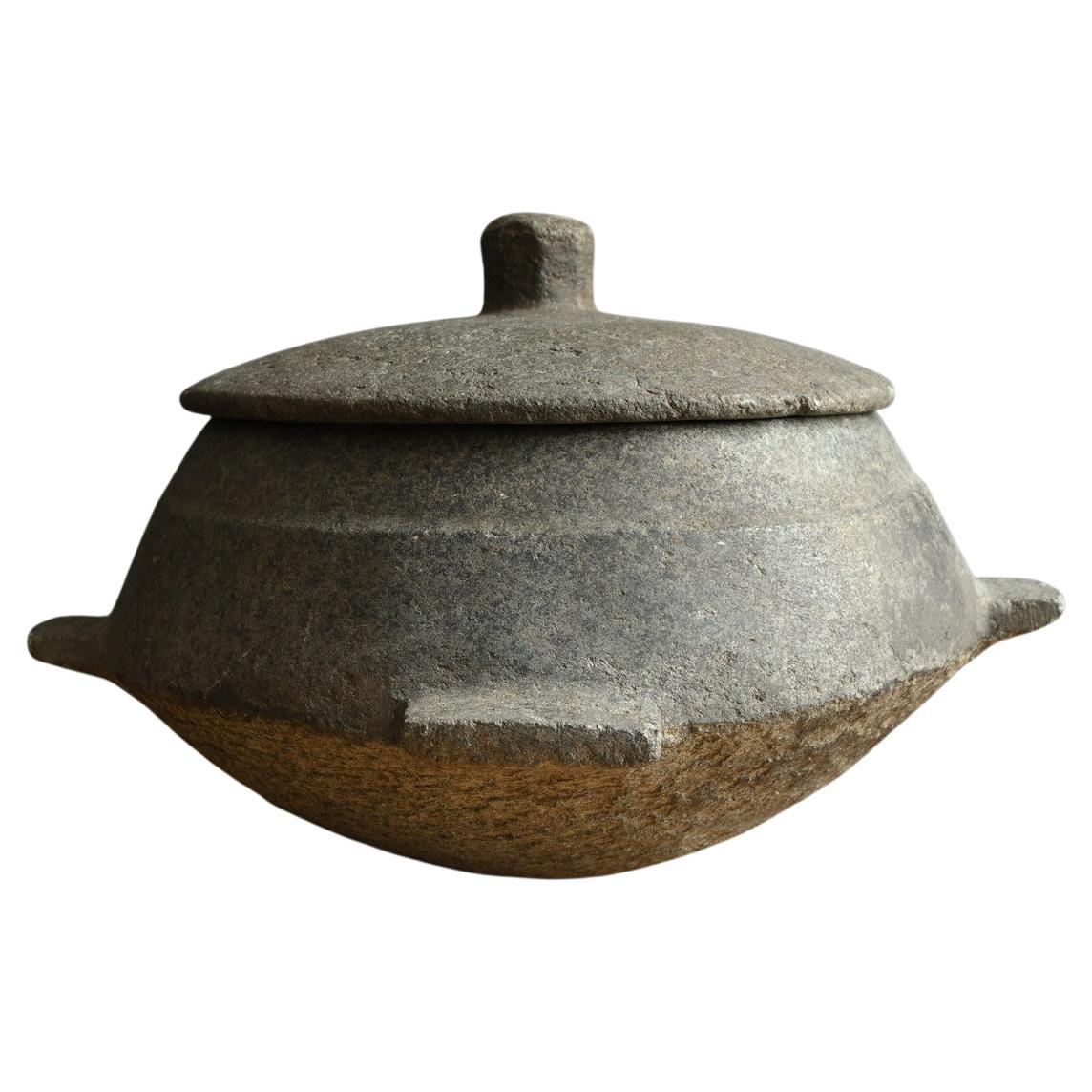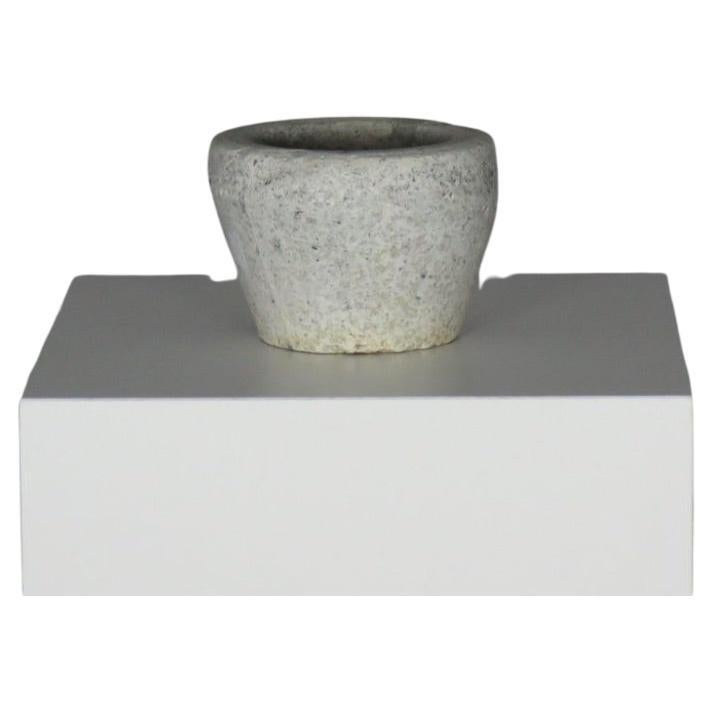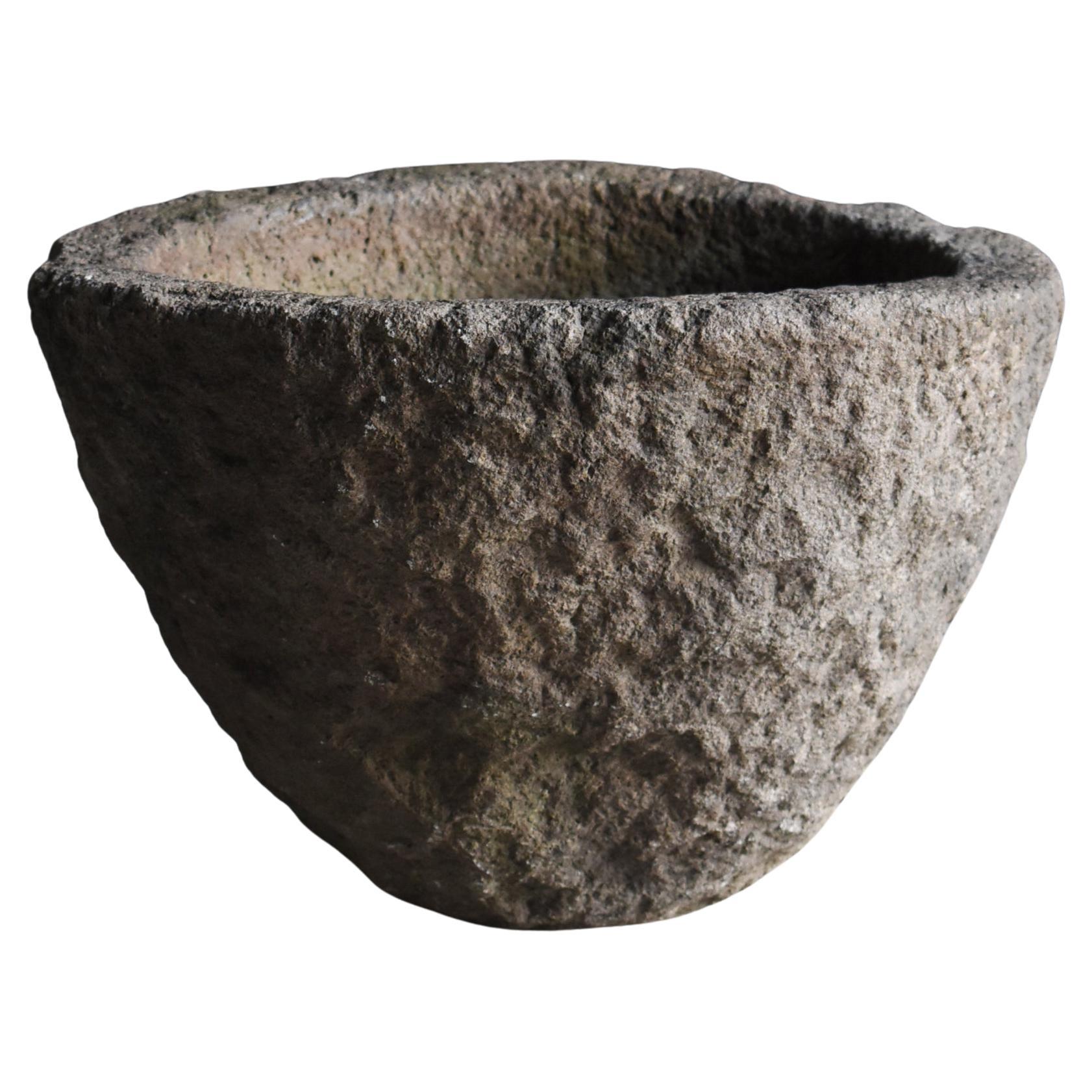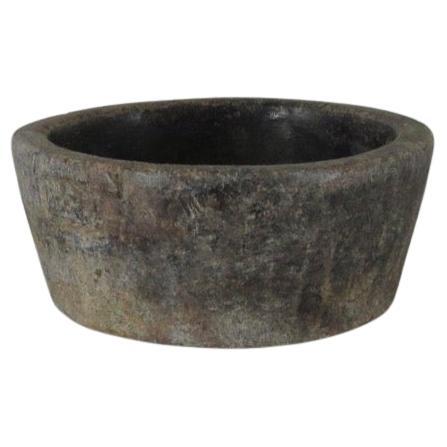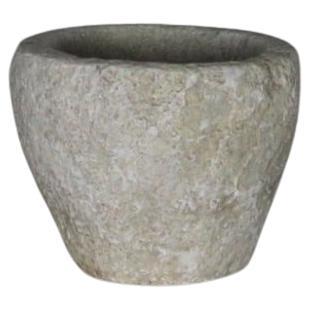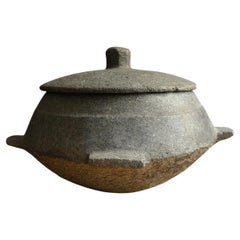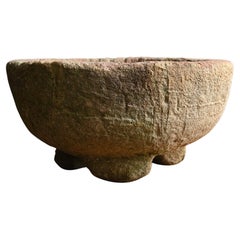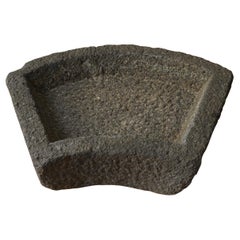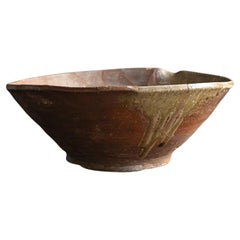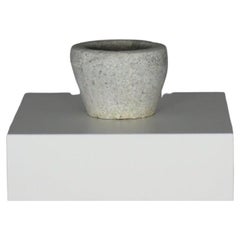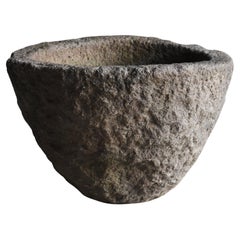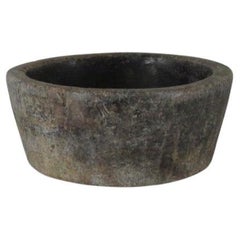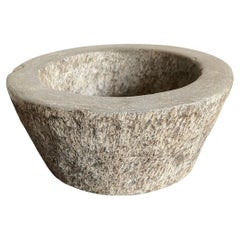Items Similar to Korean antique stone bowl / 19th century / wabi-sabi object / Joseon Dynasty
Want more images or videos?
Request additional images or videos from the seller
1 of 18
Korean antique stone bowl / 19th century / wabi-sabi object / Joseon Dynasty
$700
£527.98
€609.82
CA$980.75
A$1,090.54
CHF 570.92
MX$13,321.10
NOK 7,174.11
SEK 6,748.69
DKK 4,552.29
About the Item
Korea is a country of stone where many stone statues and pagodas have been made since ancient times.
A variety of elaborate handicrafts were created by hollowing out stones for everyday tools such as pots, kettles, braziers, and incense burners.
Stone vessels, which conduct heat slowly and do not cool easily, were convenient for cooking and brewing ingredients.
This is a small stone brazier.
This item was made in the latter half of the Joseon Dynasty, around the 19th century.
Of course, this brazier also has a very cool finish by carefully hollowing out the stones by hand and arranging the surface into a decagonal shape.
Also, Korea is a very cold country, so tools to warm the body like this have been developed.
In addition, since the same kind of product was published in the art book, the photograph is posted.
It is finished in such a tasteful atmosphere because people used it every day in their lives.
There is a chip at the top corner that has been repaired and restored, but it has been restored very well and does not look unpleasant to look at.
It is thought that this repair was done to maintain its beauty.
There is also a cream-colored vertical line nearby, but this is probably a repair of a thin crack that was only on the inside.
Please check the 11th image, which has a red circle around it.
The edge of the base is also worn down, so it looks slanted when placed in front.
However, this is also a characteristic of this item as evidence that it has continued to be used as a tool.
I filled it halfway with water and left it for half a day, but there was no water leakage.
I think it's great for arranging flowers.
Why don't you make it a collection as part of the valuable materials that show the lives of the common people of the Joseon Dynasty?
Weight: 3.4kg
- Dimensions:Height: 5.4 in (13.7 cm)Width: 10.44 in (26.5 cm)Depth: 8.51 in (21.6 cm)
- Style:Other (In the Style Of)
- Materials and Techniques:
- Place of Origin:
- Period:
- Date of Manufacture:1800s
- Condition:Repaired: There is a repaired chip at the top corner (circled in red). There is also a repaired crack on the inside (circled in red). See the detailed image.
- Seller Location:Sammu-shi, JP
- Reference Number:1stDibs: LU5487242444872
About the Seller
5.0
Platinum Seller
Premium sellers with a 4.7+ rating and 24-hour response times
Established in 2015
1stDibs seller since 2020
1,624 sales on 1stDibs
Typical response time: 7 hours
- ShippingRetrieving quote...Shipping from: senzoku, Japan
- Return Policy
Authenticity Guarantee
In the unlikely event there’s an issue with an item’s authenticity, contact us within 1 year for a full refund. DetailsMoney-Back Guarantee
If your item is not as described, is damaged in transit, or does not arrive, contact us within 7 days for a full refund. Details24-Hour Cancellation
You have a 24-hour grace period in which to reconsider your purchase, with no questions asked.Vetted Professional Sellers
Our world-class sellers must adhere to strict standards for service and quality, maintaining the integrity of our listings.Price-Match Guarantee
If you find that a seller listed the same item for a lower price elsewhere, we’ll match it.Trusted Global Delivery
Our best-in-class carrier network provides specialized shipping options worldwide, including custom delivery.More From This Seller
View AllAntique Korean Stone Pot / Joseon Dynasty / Stone Folk Art Object
Located in Sammu-shi, Chiba
This stone pot was made in Korea during the late Joseon dynasty, between the late 19th and early 20th centuries. Its sturdy appearance, carved from a granite-like stone, emanates a p...
Category
Antique Late 19th Century Japanese Other Antiquities
Materials
Stone
Old Japanese stone bowl/"Tsukubai"/Garden stone/Rain gutter stone/
Located in Sammu-shi, Chiba
This is a traditional Japanese item.
In Japan, there is a culture of beautifying gardens.
One such item, often placed where guests wash their hands, is...
Category
20th Century Japanese Taisho Garden Ornaments
Materials
Stone
Japanese antique stone basin "Tsukubai" / Garden ornament / 1868-1920
Located in Sammu-shi, Chiba
This is an old tsukubai (stone basin) believed to have been made in Japan.
In Japanese culture, there is a long-standing tradition of designing gardens that reflect the changing bea...
Category
Antique Late 19th Century Japanese Meiji Garden Ornaments
Materials
Stone
Japanese antique pottery bowl/Tokoname ware/12th-13th century/excavated pottery
Located in Sammu-shi, Chiba
This is a pottery called Tokoname ware.
Tokoname is a kiln located in Aichi Prefecture, Japan (Tokoname Kiln is marked with a red circle on the map).
It is said to have originated ar...
Category
Antique 15th Century and Earlier Japanese Other Decorative Bowls
Materials
Pottery
Japanese antique pottery bowl [tokoname ware]/Tokoname ware/12th-13th century
Located in Sammu-shi, Chiba
This bowl is made from Tokoname ware, a type of pottery from Aichi Prefecture. Tokoname ware has a history dating back to the 12th century, and there are still several active kilns t...
Category
Antique 15th Century and Earlier Japanese Other Antiquities
Materials
Pottery
Korean antique pottery bowl/15th-16th century/Joseon Dynasty
Located in Sammu-shi, Chiba
This is a piece of pottery made during the early Joseon Dynasty of the Yi Dynasty in South Korea.
This tea bowl, which was made around the 15th century, was used by common people and...
Category
Antique 15th Century and Earlier South Korean Other Pottery
Materials
Pottery
You May Also Like
Antique Stone Bowl (3)
Located in Washington, DC
Hand-Carved Antique Stone Bowl. France, early 20th century.
3 of 3 available.
Category
Early 20th Century French Rustic Decorative Bowls
Materials
Stone
Japanese Antique Tsukubai 1860s-1900s / Stone Vase Basin Wabi Sabi
Located in Chōsei District Nagara, JP
This is an old tsukubai (stone) made in Japan.
This item was made during the Meiji period (1860s-1900s), and its natural texture over the years is attractive.
Tsukubai is a stone wa...
Category
Early 20th Century Japanese Meiji Vases
Materials
Stone
Antique Stone Bowl, Europe
Located in Washington, DC
Antique Stone Bowl with Beautiful Patina. Europe, circa early 20th century.
Category
20th Century Decorative Bowls
Materials
Stone
19th Century Belgian Blue Stone Bowl
Located in Nijlen, BE
Beautiful simplistic bowl, carved in Belgian bluestone.
Weathered signs of age, in very good condition.
Originally from the Ardennes and served as a functional bowl.
What is unique ...
Category
Antique 19th Century Belgian Minimalist Decorative Bowls
Materials
Stone
Antique Stone Bowl (2)
Located in Washington, DC
Hand-Carved Antique Stone Bowl. France, early 20th century.
2 of 3 available.
Category
Early 20th Century French Rustic Decorative Bowls
Materials
Stone
Vintage Stone Mortar Bowl
Located in Old Town Orange, CA
Antique stone mortar bowl, great decorative item, or can be used. Accessories not included
Size:6 1/4” D x 4” H.
Category
20th Century Vases
Materials
Stone
$103 Sale Price
20% Off
More Ways To Browse
Antique Stone Well
Dynasty Bowl
11th Century Furniture
Antique Stone Bowl
Wabi Sabi Stone
Restoring Antique Tools
Antique Brazier
Antique Cream Pot
Antique Cream Pots
Antique Korean Vases
Stone Pagoda
Antique Hand Colored Photograph
Wabi Sabi Pot
Antique Carved Stone Vases
Antique Water Kettle
Antique Korean Bowl
Korean Pot
Stone Flower Pot
